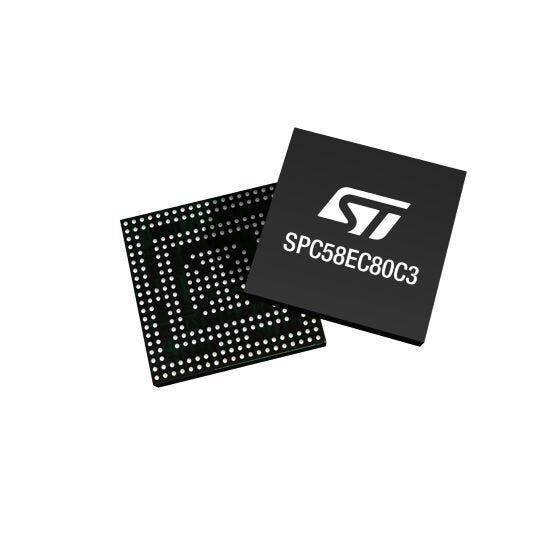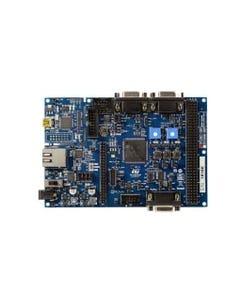📢 $9.99 flat rate shipping in EMEA countries! Ends May 15th - Don't Miss Out!. 🛒 Shop now
Active
SPC58EC80C3QMC1X
32-bit Power Architecture MCU for Automotive General Purpose Applications - Chorus family
| Supply Voltage Min Volt | 3.0 |
| Supply Voltage Max Volt | 5.5 |
| Operating Temp Min Celsius | -40.0 |
| Core | Dual e200z4d |
| ECCN US | 5A991.b.4.a |
| ECCN EU | NEC |
| Packing Type | Tape And Reel |
| RoHs compliant | Ecopack2 |
| Grade | Automotive Safety |
| Package Name | FPBGA 17X17X1.8 292 B0.55 P0.8 |
The SPC584Cx and SPC58ECx microcontroller is the first in a new family of devices superseding the SPC564Cx and SPC56ECx family. SPC584Cx and SPC58ECx builds on the legacy of the SPC564Cx and SPC56ECx family, while introducing new features coupled with higher throughput to provide substantial...
Read More
|
| Quantity | $ per unit | Savings |
|---|---|---|
| 1-9 | $35.30 | 0% |
| 10-24 | $32.56 | 8% |
| 25-50 | $31.10 | 12% |
| 50 + |
Contact sales |
|
| Supply Voltage Min Volt | 3.0 |
| Supply Voltage Max Volt | 5.5 |
| Operating Temp Min Celsius | -40.0 |
| Core | Dual e200z4d |
| ECCN US | 5A991.b.4.a |
| ECCN EU | NEC |
| Packing Type | Tape And Reel |
| RoHs compliant | Ecopack2 |
| Grade | Automotive Safety |
| Package Name | FPBGA 17X17X1.8 292 B0.55 P0.8 |
The SPC584Cx and SPC58ECx microcontroller is the first in a new family of devices superseding the SPC564Cx and SPC56ECx family. SPC584Cx and SPC58ECx builds on the legacy of the SPC564Cx and SPC56ECx family, while introducing new features coupled with higher throughput to provide substantial...
Read More
|



